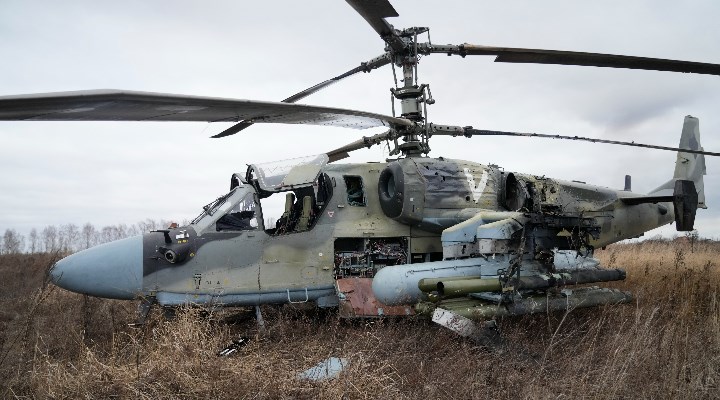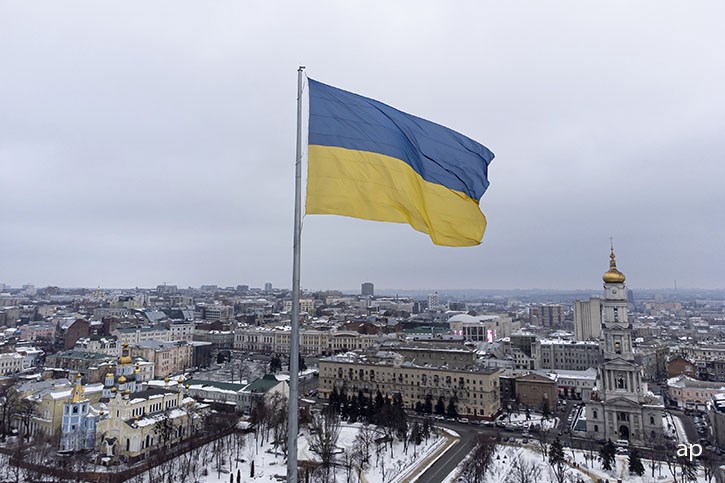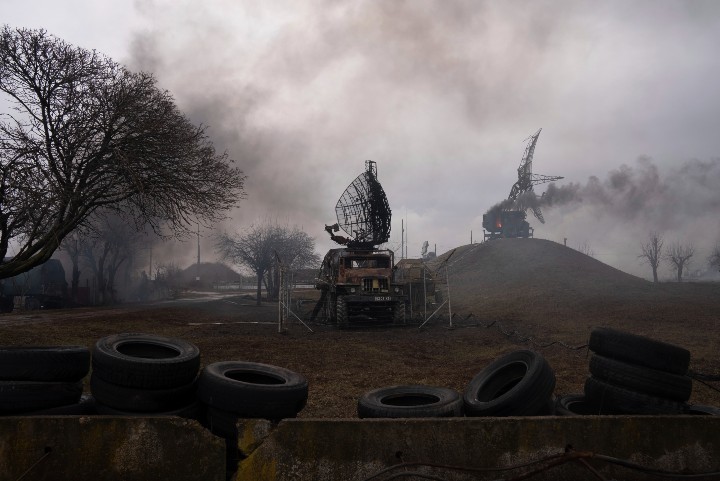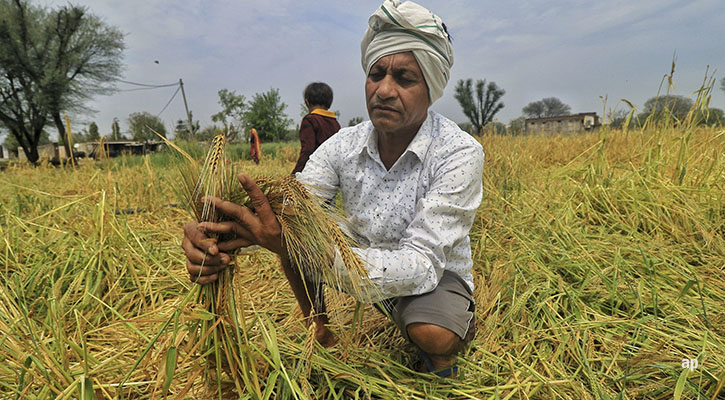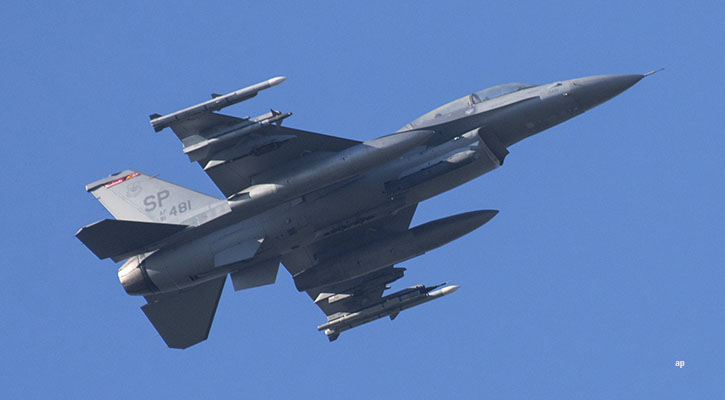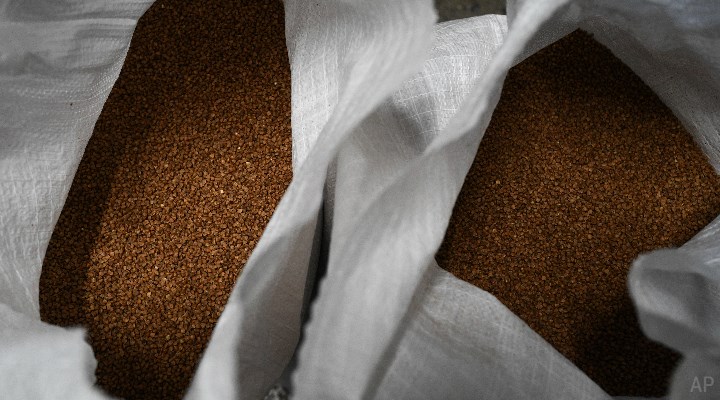
Energy is not the only resourcing issue at stake in the war between Russia and Ukraine. Food and fertilisers are already a source of concern too.
According to the US Agriculture Department, Russia and Ukraine together account for 29% of global wheat exports. The nearby Black Sea is part of a key shipping route for their produce. Ukraine is also a top exporter of corn, barley, and other grain.
On Friday US wheat futures hit their highest in nearly 14 years. Corn hovered near an eight-month peak, and soybeans rebounded.
This is not a new trajectory. Grain prices have been reacting to Ukraine’s current situation for months. In late January, wheat futures climbed as far as 830 cents, approaching the nine-year high of more than 860 cents reached in November 2021.
Meanwhile, the global demand for wheat has expanded with population growth and income-driven improvement in quality-of-life indicators. In the Department for Agriculture’s latest wheat outlook for 2021/22, global wheat production was revised down 2.2 million metric tons (MT) to 776.4 million MT.
Global wheat consumption was predicted to increase by 0.6 million MT to 788.1 million, however. It thought the food, seed and industrial use decrease was not enough to offset an increase for feed and residual use.
Grain Inflation
With the supply decreasing and the demand increasing, that only means one thing.
“The current state of the conflict will certainly have an impact on global grain markets, not least because Ukrainian exports will be largely blocked”, says Ignace De Coene, equity fund manager in the team that manages the DPAM INVEST B equity fund, which focuses on sustainable food trends.
“In general, we should expect price hikes on all major grains (wheat, corn and soy)”.
According to the manager, the extent of these price movements will depend on Ukraine's ability to materially export these commodities and Russia's ability to circumvent sanctions, although China is likely to remain a willing buyer given the huge volumes it imports every year.
There are other factors to consider, however.
“Most of these exports leave from Black Sea ports, at the heart of where military conflict might occur”, says a report from Capital Economics’ senior economist team.
“Aside from the port issue, there is also the risk of damage to Ukraine’s crops in the wake of fighting on the ground. Given the scale and severity of the risks, we have also raised our near-term forecasts for most agricultural commodities by around 25%”.
Capital Economics is suggesting this crisis could add 1.5% to eurozone inflation this year (particularly from food and energy costs), which itself has the potential to back the European Central Bank into a corner over interest rate rises. They could now come sooner (and harder) than originally expected.
“In terms of food costs, any disruption in supply from Russia and Ukraine could prove material, with large supermarkets and retailers’ business models not set up to pass through rapid and large price increases”, says Michael Field, a senior equity analyst for Morningstar.
Critical Yield
From an investor perspective, commodities can be used as a geopolitical hedge.
“Russia accounts for around 40% of the European Union’s gas imports and 30% of its oil imports”, notes Mark Haefele, chief investment officer global wealth management at UBS.
“But Ukraine is a material exporter of corn, wheat, and oilseeds. Amid the risk of supply disruptions, we think broad commodities can be an effective geopolitical hedge for portfolios, as well as offering an attractive source of returns in an environment of accelerating growth, persistent inflation, and higher rates”.
It is not a uniform picture though. Any increase in prices will have different effects depending on how different companies are positioned within the supply chain.
“Companies operating downstream of the agri-food value chain (in particular large B2C consumer companies) will probably be affected by an increase in the cost of food commodities”, says DAPM’s De Coene.
“But higher prices for commodities will also improve farming companies’ income and incentivise them to maximize yields and improve productivity. They are therefore likely to spend more on better seeds, special fertilisers and equipment, [thus] improving the income of companies working on those segments”.
The Re-Route
Finally, the invasion of Ukraine has fanned concerns over fertiliser supply. Russia was the largest nitrogen exporter in 2021, and the third-largest of potash. It is the fifth largest phosphate exporter.
“If Russian fertilizer exports were to be targeted in sanctions, we think the more likely result would be a shift in global trade flows”, says Seth Goldstein, another of Morningstar’s senior equity analysts.
“The EU is not a top destination for Russian fertiliser exports. The US is Russia's top phosphate export market”.
However, the US has already reduced the amount of Russian fertiliser imports through anti-dumping import taxes on both nitrogen and phosphate, which limits the effectiveness of sanctions.
“In potash, we see little long-term impact from potential sanctions against Russia and existing sanctions against Belarus”, says Goldstein.
“These countries produce roughly 40% of global potash exports. We think production from Belarus and Russia would likely be routed to China, which may then export the product to other countries. China has historically been the largest global phosphate exporter, selling to India, Pakistan, and Brazil. As such, we think the country could use its existing fertiliser trade relationships to export potash if needed”.








